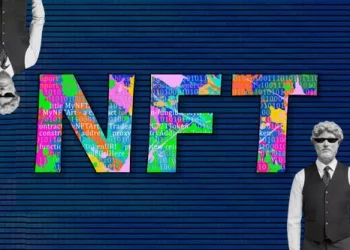In the ever-evolving landscape of the digital world, Non-Fungible Tokens (NFTs) have emerged as a revolutionary concept. As the popularity of NFTs continues to soar, it is crucial to understand the various facets of this digital phenomenon. This article aims to provide a comprehensive list of NFT meanings, shedding light on the diverse aspects that make NFTs a unique and influential force in the modern digital economy.
1. NFT Defined:
At its core, a Non-Fungible Token, or NFT, represents a unique digital asset that is stored on a blockchain. Unlike traditional cryptocurrencies such as Bitcoin or Ethereum, NFTs are indivisible and cannot be exchanged on a one-to-one basis. Each NFT holds distinctive information that sets it apart from any other token, making it one-of-a-kind.
2. Digital Ownership:
One of the key aspects of NFTs is the concept of digital ownership. NFTs use blockchain technology to establish and verify ownership of digital assets, whether they be artworks, music, videos, or virtual real estate. This blockchain-based ownership provides a transparent and immutable record of the asset’s provenance.
3. Tokenization of Assets:
NFTs enable the tokenization of assets, transforming physical or digital entities into unique tokens on a blockchain. This process allows creators to monetize their digital creations and enables users to own a piece of digital content that holds verifiable scarcity and authenticity.
4. Smart Contracts:
Smart contracts play a pivotal role in the NFT ecosystem. These self-executing contracts are encoded with predefined rules and conditions, facilitating automatic and trustless transactions. In the context of NFTs, smart contracts govern the creation, transfer, and ownership of digital assets, ensuring a secure and transparent process.
5. Interoperability:
NFTs are not confined to a specific platform or ecosystem. The interoperability of NFTs allows them to be seamlessly transferred and used across various blockchain networks. This cross-chain compatibility enhances the liquidity and accessibility of NFTs, fostering a more interconnected digital economy.
6. Decentralization:
Decentralization is a fundamental principle of blockchain technology, and NFTs inherit this trait. The decentralized nature of NFTs means that there is no central authority controlling the issuance or management of these tokens. This decentralization fosters a more democratic and inclusive ecosystem for creators and collectors alike.
7. Rarity and Scarcity:
The scarcity of digital assets is a defining feature of NFTs. Creators can implement limitations on the number of tokens for a specific piece of content, creating scarcity that contributes to the perceived value of the NFT. The rarity and exclusivity associated with certain NFTs make them more appealing to collectors.
8. Proof of Authenticity:
NFTs serve as a robust mechanism for proving the authenticity of digital assets. The blockchain’s immutable ledger ensures that the ownership and origin of an NFT can be traced back to its creation, providing a verifiable chain of custody. This proof of authenticity addresses concerns related to digital piracy and forgeries in the digital space.
9. Programmability and Utility:
Beyond being static digital assets, NFTs can carry programmable functionalities. This programmability opens up new possibilities, allowing NFTs to represent more than just ownership. NFTs can be programmed to grant access to exclusive content, royalties for creators on secondary sales, and even participation in decentralized autonomous organizations (DAOs).
See Also: Can I Sell NFT on Coinbase: What You Need To Know
Conclusion:
In conclusion, the world of NFTs is multifaceted, encompassing various meanings and functionalities that extend far beyond simple digital ownership. Understanding the nuances of NFTs, from their decentralized nature to their proof of authenticity, is crucial for both creators and collectors navigating the evolving landscape of the digital economy. As NFTs continue to shape the future of digital assets, staying informed about their meanings and applications will be key to harnessing their full potential.
Related topics:

















